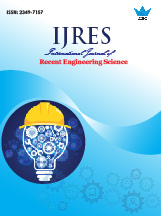Experimental Study On Dairy Wastewater Treatment By Phytoremediation process
 |
International Journal of Recent Engineering Science (IJRES) |  |
| © 2021 by IJRES Journal | ||
| Volume-8 Issue-3 |
||
| Year of Publication : 2021 | ||
| Authors : M. Dhivakar, S. Nagamani, S. Sowmya |
||
| DOI : 10.14445/23497157/IJRES-V8I3P102 |
How to Cite?
M. Dhivakar, S. Nagamani, S. Sowmya, "SARS-COV-2 in Domestic Wastewater: A Treatment Facility Planning," International Journal of Recent Engineering Science, vol. 8, no. 3, pp. 7-11, 2023. Crossref, https://doi.org/10.14445/23497157/IJRES-V8I3P102
Abstract
Dairy industry is viewed as the biggest wellspring of food-handling wastewater in numerous nations. An enormous measure of water is utilized during preparing of milk; this outcome in the age of high volume of profluent containing disintegrated sugars, proteins, fats, and so on, which are mostly natural in nature. Consequently, dairy wastewater is portrayed by high convergence of natural matter and high BOD. Emanating with such qualities can't be utilized for land water system reasons and can't be released into the public sewer/surface water. The legitimate treatment of dairy wastewater is essential before removal. Phytoremediation is one such procedure, which is characterized as the utilization of plants as miniature living beings to eliminate innocuous toxins from polluted water. In this examination, an endeavor is made to assess the proficiency and reasonableness of sea-going plants like lotus, duckweed and sunflower to treat dairy wastewater. Oceanic plants have drawn consideration in light of fast development, high biomass creation and capacity to eliminate assortments of toxins from dairy wastewater. They can eliminate even supplements and other synthetic components from dairy wastewater.
Keywords
Phytoremediation, Lotus, Sunflower, Duckweed, Dissolved oxygen, Total solids.
Reference
[1] Abolanle S. Adekunle et al., “Removal of Organic Metals from Industrial Effluents by Water Hyacinth (Eichorniacrassipes),” Journal of Environmental Chemistry and Ecotoxicology, vol. 4, no. 11, pp. 203-211, 2012.
[CrossRef] [Google Scholar] [Publisher Link]
[2] AY Ugya, IM Toma, and A Abba, “Comparative Studies on the Efficiencies of Lemna Minor, Eicchorniacrassipes and Pistia Stratiotes in the Phytoremediation of Refinery Wastewater,” Science World Journal, vol. 10, no. 3, 2015.
[Google Scholar] [Publisher Link]
[3] Om prakash Saha, “Treatment of Pesticides Industry Wastewater by Water Hyacinth (Eichorniacrassipes),” Advanced Research Journal of Biochemistry and Biotechnology, vol. 1, no. 2, pp. 6-13, 2014.
[Google Scholar] [Publisher Link]
[4] F. O. Ajibade, K. A. Adeniran, C. K. Egbuna, “Phytoremediation Efficiencies of Water Hyacinth in Removing Organic metals in Domestic Sewage (A Case Study of University of Ilorin, Nigeria),” The International Journal of Engineering and Science (IJES), vol. 2, no. 12, pp. 16-27, 2013.
[Google Scholar] [Publisher Link]
[5] C. Mel Lytle et al., “Reduction of Cr(VI) to Cr(III) by Wetland Plants: Potential for in Situ Heavy Metal Detoxification,” Environmental Science and Technology, vol. 32, no. 20, pp. 3087-3093, 1998.
[CrossRef] [Google Scholar] [Publisher Link]
[6] A.Mary Lissy P N, and B. G.Madhu, “Removal of Organic Metals from Waste Water Using Water Hyacinth,” ACEE International Journal on Transportation and Urban Development, vol. 1, no. 1, 2011.
[Google Scholar] [Publisher Link]
[7] C.O. Akinbile, and Mohd S. Yusoff, “Assesing Water hyacinth and Lettuce Effectiveness in Aquaculture Wastewater Treatment,” International Journal of Phytoremediation, vol. 14, no. 3, pp. 201-211, 2012.
[CrossRef] [Google Scholar] [Publisher Link]
